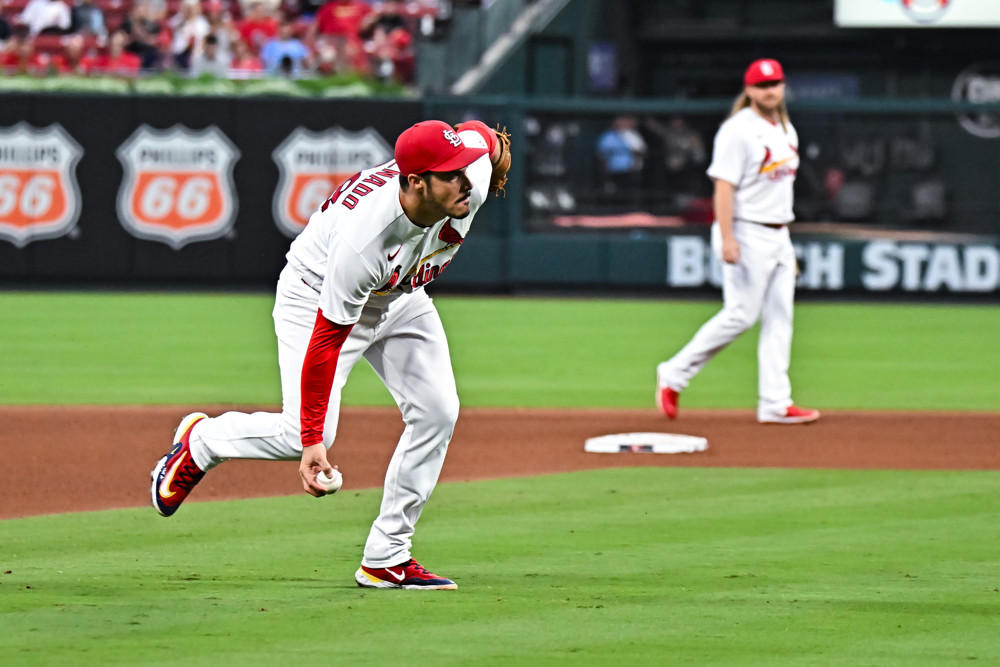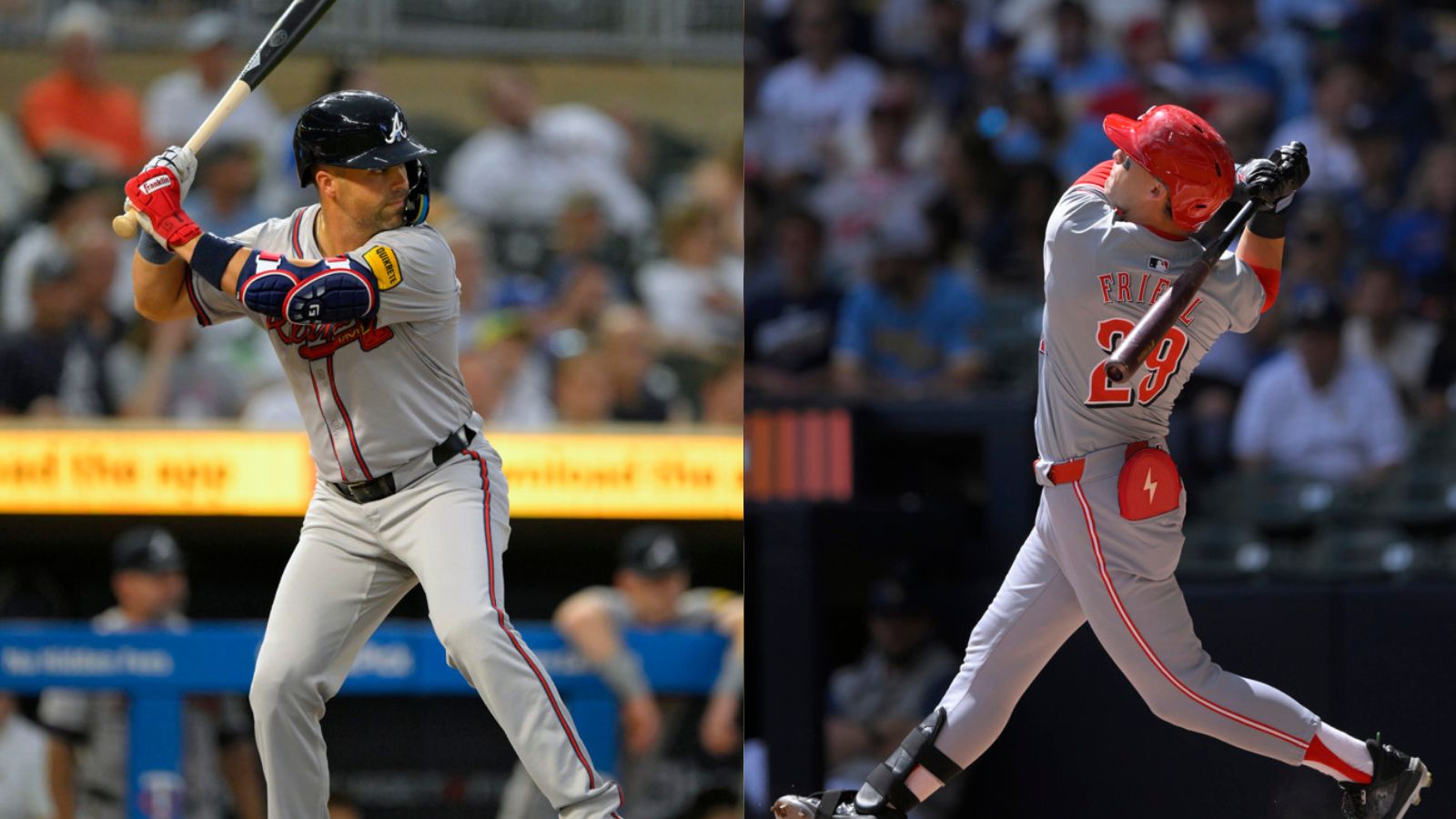Back in July I wrote about what could be causing Josh Hader’s struggles. His April and May were on par with Hader’s usual dominance but June and July were a different story. Hader was getting hit more often and harder than ever before.
The only issue I was able to find was with Hader’s release point. He wasn’t throwing from his usual low arm slot, and it was leading to less deception. Hitters were able to recognize his pitches better than before.
Hader continued to struggle in August, allowing a .464 avg and 1.207 OPS. But September, and two appearances in October, were different. The Padres seem to have unlocked the dominant Josh Hader we all remember, and just in time for the playoffs. Since September 1, Hader allowed just a .114 batting average and .322 OPS. So what happened?
His vertical and horizontal release points haven’t changed much since July. There’s less than an inch difference for the fastball and slider, though they are trending in the right direction.
(All images via Hader’s page on Baseball Savant)
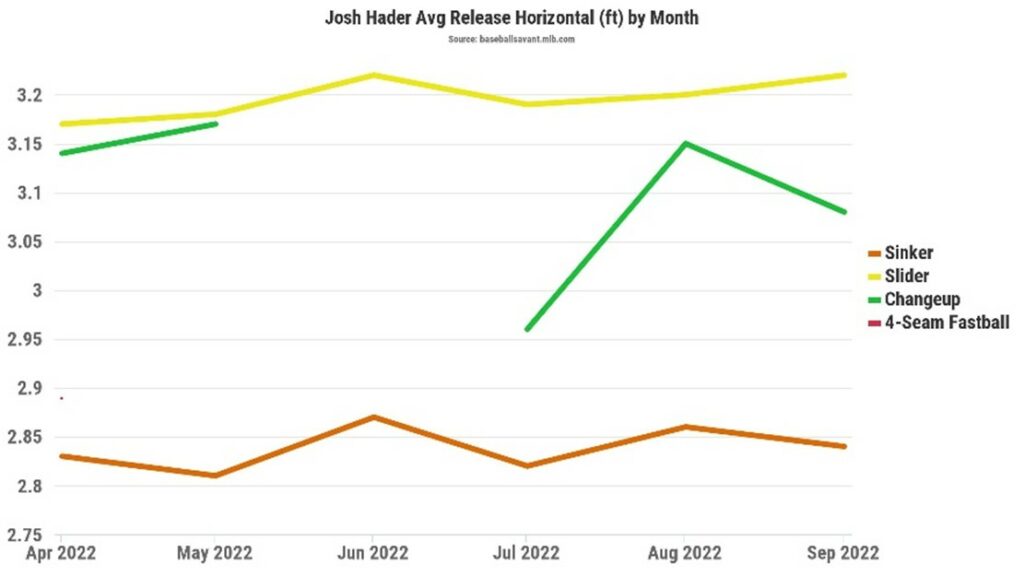
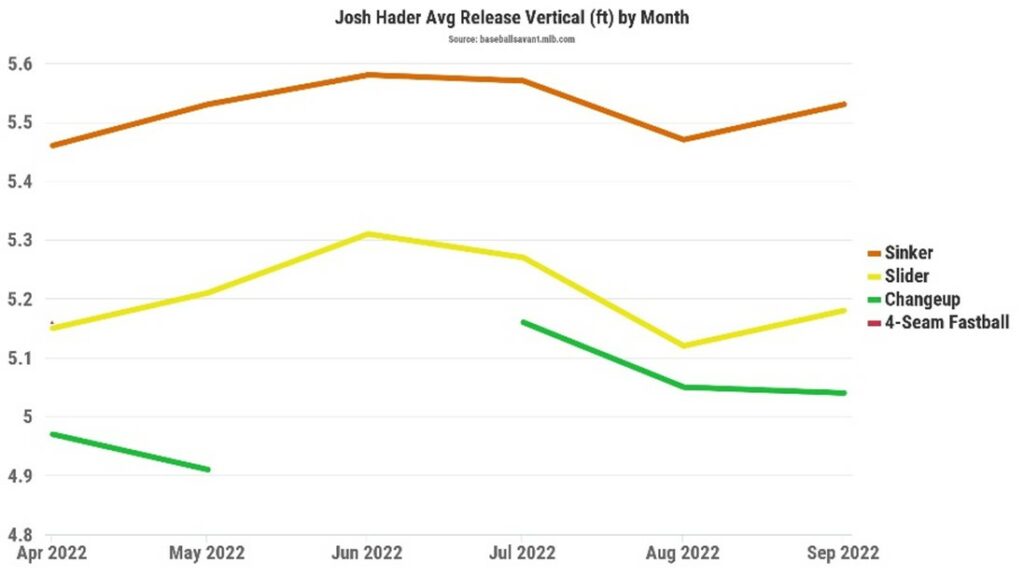
There is one noticeable difference in Hader’s delivery though. His extension down the mound has increased slightly, about 4 inches. A few extra inches of extension isn’t going to increase the perceived velocity too much. Usually, it takes about a foot of extra extension to start seeing a difference.
But it does tell me that Hader has started to straighten out his mechanics . The release point might not be where it’s been in past seasons, but the extra extension could be helping him compensate for his changed release point.
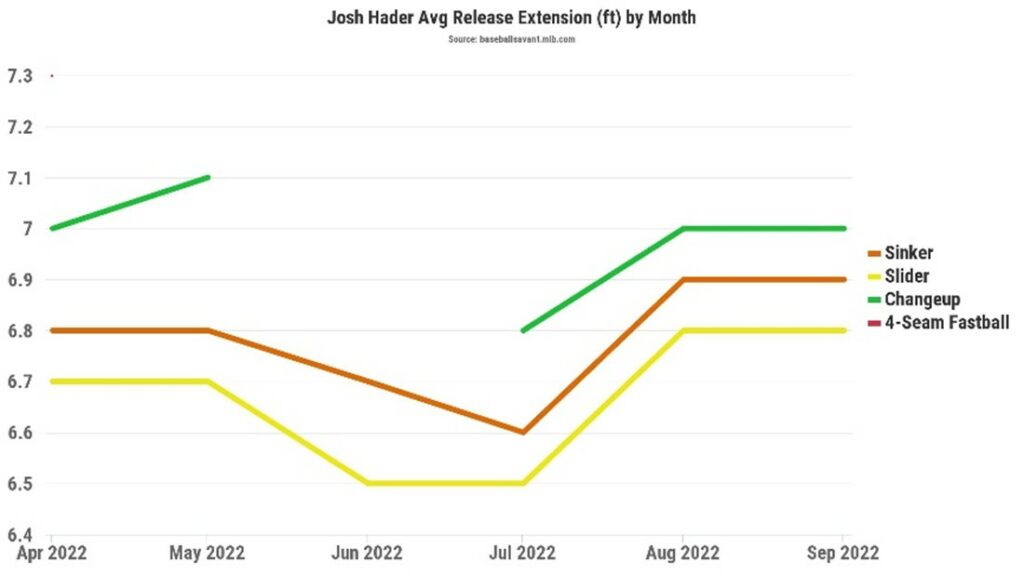
July and August were statistically Hader’s worst months of the season. He gave up a combined 25 earned runs in those months. Every other month he’s given up only 4 earned runs.
July was also his the month in which both his extension and release point reached its smallest point, per the data. Once Hader was traded to San Diego in August, both areas improved.
August was still a struggle and Padres fans were starting to worry (a lot of them read my previous article). The way he’s performed since September started must have them feeling good going into the postseason. His numbers are down across the board and he’s looking dominant yet again.
| August | September/October | |
| ERA | 19.06 | 0.87 |
| K-BB | 9-7 | 13-2 |
| First Strike % | 44% | 62% |
| Swinging Strike % | 13% | 17% |
Hader faced the same number of batters in the two months but his numbers couldn’t be more different. Other than the nearly 18-point difference in ERA, the biggest thing that stands out is the First Strike %. He’s attacking the zone early and often. This has led to his K% rising and his BB% plummeting.
Hitters are swinging more frequently at his pitches in the zone but making contact less. This can be attributed in part to some added deception with his extra few inches in release extension. The new game plan the Padres have for him is playing big a role.
Hader’s fastball usage is up to nearly 80% and he’s throwing it in the zone 60% of the time. He’s being more aggressive and trusting his fastball with confidence. His swing and miss % on the fastball in September is up to 35%, up from 24% in July/August.
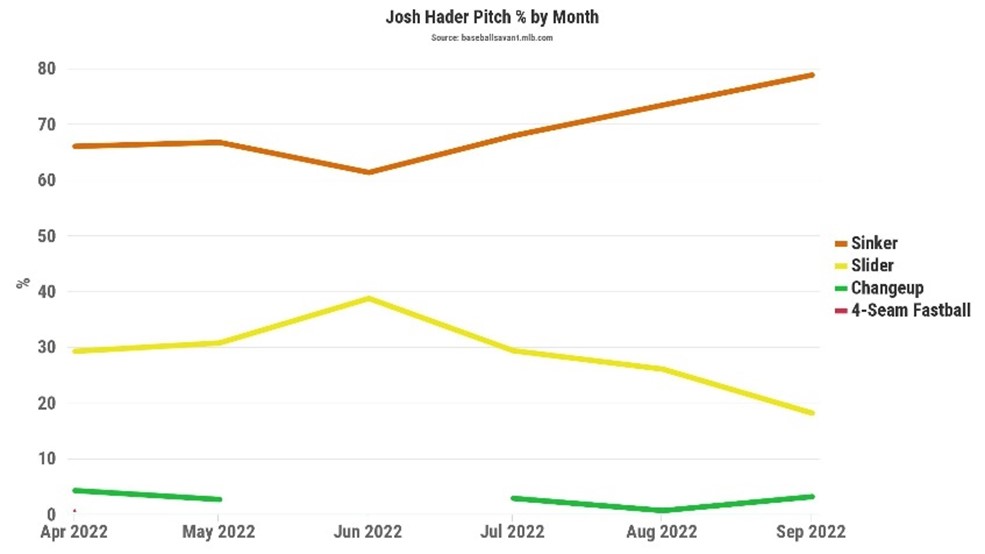
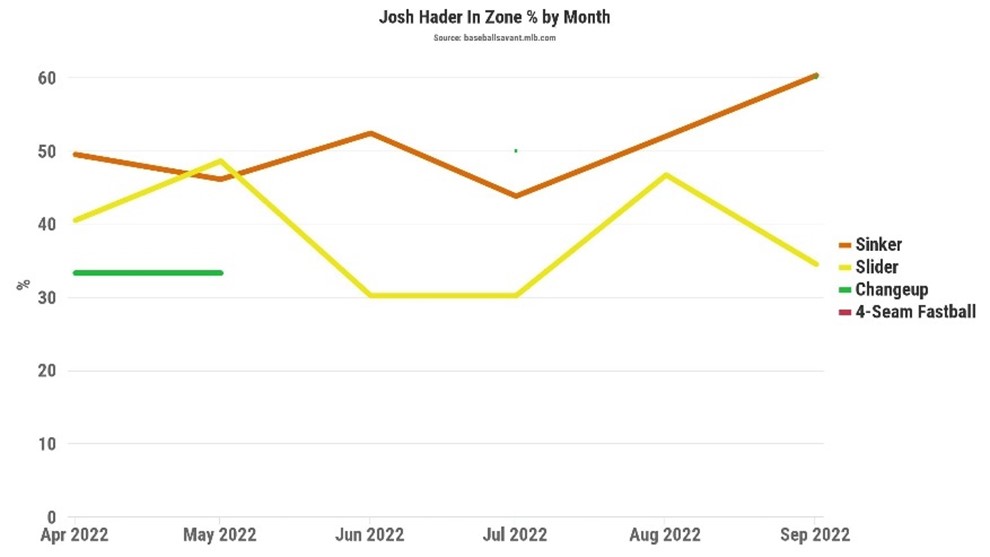
As I mentioned in my first article about him, Hader looks to attack the top part of the zone with his fastball. His numbers in that quadrant of the zone have improved when looking at August versus September/October.
| Usage% | AVG | Strike % | Chase% | |
| August | 38% | .333 | 46% | 20% |
| Sept/Oct | 47% | .133 | 68% | 34% |
He’s been able to spot the fastball more in the upper quadrant and has added back the “rise” to the pitch. Just look at the 14 percentage-point increase in chase rate and the 22 percentage-point increase in strike percentage. Hader’s been able to get hitters to swing under fastballs up and out of the zone like we’re so used to seeing him do.
The numbers show that something has clicked for him. The eye-test proves it also, hitters are not as comfortable in the box against him. He’s back to getting ugly swings and blowing fastballs by everyone.
Even with all of Hader’s ups and downs this season, his fastball metrics have remained incredibly consistent. There were no dips in velocity or spin rate, even when he struggled.
His average spin rate per month has been between 1,932-2,047 rpm all season. While his average velocity per month has been 97mph, with the exception of April (96mph), July did feature an inch less of vertical movement on the fastball, but that’s really the only time the fastball metrics have waivered.
Hader has figured out something new with his slider though. He’s throwing it harder and with fewer inches of drop. The added extension is most likely playing a big role in this. He’s finishing his pitches better and potentially able to pull down on his slider more to get the added velocity and slightly higher spin.
| APRIL | JULY | AUGUST | SEPTEMBER | |
| Velocity | 83 | 84 | 85 | 86 |
| Vertical Break | 37” | 38” | 38” | 36” |
| Spin rate | 2,378 | 2,436 | 2,562 | 2,517 |
>> Data from BaseballSavant.com
In September Hader’s slider averaged 86 mph, the highest slider velocity for a month of his career. He increased his spin rate by about 150 rpm from April to September. He’s also getting an inch less of drop to the slider due to the added velocity.
Hader throws a gyro slider so his horizontal break is never going to be something he needs to worry about. He hasn’t given in to the sweeper craze of 2022. He wants his slider to break straight down which is why I don’t think he messed around with the horizontal break (and the Statcast data backs that up).
Even with the increased velocity of his slider, Hader has trusted his fastball more as a Padre. His slider is filthy but when you throw 97 mph with a low arm slot and a high riding fastball, why wouldn’t you use it 80% of the time? In his first three seasons in the big leagues, his fastball usage was up around 80%, so the Padres are having him get back to basics.
Padres fans have to be happy with the way Hader finished the regular season. He’s been trending in the right direction since the calendar hit September and didn’t falter at all during the month. The Padres game plan of throwing more fastballs has given him a jolt of confidence. His first postseason appearance with San Diego will be fascinating to watch.

